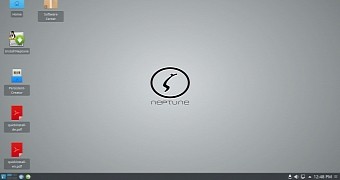Key Points
- Ubuntu users gain direct access to GPU-accelerated Apache Spark, boosting performance up to 7x without altering existing code.
- Canonical’s open-source efforts with NVIDIA RAPIDS now work seamlessly on Ubuntu-based Kubernetes and OpenShift deployments, easing cloud migrations.
- Pre-trained AI models like Stable Diffusion and Llama 3 can now run up to 5x faster on Ubuntu when using this new Spark-GPU integration.
If you’ve ever worked with Apache Spark, you know it’s a powerhouse for distributed data processing. Traditionally, Spark splits workloads across CPU cores to handle tasks in parallel. But here’s a twist: Spark can run even faster on GPUs, and Ubuntu users are now at the forefront of that shift, thanks to a collaboration by Canonical. This advancement isn’t just about speed—it’s a game-changer for organizations dealing with big data or AI workflows who want to cut costs, reduce infrastructure footprints, and streamline operations.
The secret weapon behind this jump in efficiency is NVIDIA RAPIDS, an open-source framework that uses GPUs to accelerate data analytics and machine learning (ML). Canonical, the team behind Ubuntu, has added native GPU support to Spark without requiring developers to rewrite their applications. That means existing workflows can silently tap into GPU power, slashing query times by 50% or even 700% in certain cases. The savings are huge: tasks that once needed dozens of CPU-based servers might now run on just a few GPU-equipped machines. For enterprises relying on Ubuntu Linux, this opens a path to faster insights with less overhead.
The integration was tested extensively on Ubuntu 22.04 and 24.04 LTS environments, ensuring compatibility with Canonical’s enterprise-grade distribution. Crucially, this works with Kubernetes and OpenShift Open Data Hub, two platforms critical for containerized, cloud-native computing. Ubuntu’s role here is pivotal—its robust ecosystem for deploying and managing large-scale apps (especially in cloud setups) makes it a natural fit for GPU-powered Spark jobs. This move aligns with Canonical’s broader push to optimize Ubuntu for modern AI and ML workloads, positioning it as a go-to OS for performance-driven applications.
Why does this matter for open-source communities and developers? By abstracting GPU usage into Spark’s existing structure, Canonical removes a major friction point. Open-source users can now leverage advanced hardware acceleration the same way they’ve used Spark for years, accelerating everything from enterprise analytics to real-time data processing. This also reinforces Ubuntu’s leadership in cloud and AI readiness, as it mirrors how Python-based ecosystems (like TensorFlow and PyTorch) already utilize GPUs.
For data science teams using Ubuntu, the implications are straightforward. Tasks like training AI models or running complex queries suddenly take up to 5x less time. Canonical estimates that resource-intensive models such as Stable Diffusion for image generation or Meta’s Llama 3 can see up to 7x cost savings when shifting from CPUs to GPUs. That’s not just a performance tweak—it’s a strategic advantage for projects where time-to-insight matters.
The collaboration with NVIDIA means developers can rely on proven tools for diagonal, lossy, and batch operations. Spark’s DAG (Directed Acyclic Graph) execution model now overlays RAPIDS’ GPU drivers, allowing workloads to be automatically assigned to the right hardware. If you’re running Ubuntu in cloud or hybrid environments, this integration works with Canonical’s MAAS (Metal as a Service) and Mirantis Kubernetes packaging, simplifying vertical scaling and hardware upgrades.
Ubuntu users and developers should start evaluating how GPU acceleration could apply to their Spark pipelines. Imagine automatically routing machine learning tasks to GPUs while keeping data engineering jobs on CPUs—zero code changes required. This approach also future-proofs infrastructure, as GPU demand in AI/ML grows.
What’s next? Canonical plans to expand this work to support more GPU hardware and post-training models. For now, the takeaway is clear: Ubuntu has become a key player in unlocking Spark’s full potential on modern data centers. Whether you’re optimizing for speed, cost, or scalability, this bridge between Spark and GPUs offers a compelling reason to upgrade your cluster stack.
Action item: If you manage Spark or ML workloads on Ubuntu, test this integration in your next data pipeline. The open-source nature of RAPIDS and Canonical’s support ensures a low barrier to adoption. As AI models grow more complex and cloud computing shifts toward specialized hardware, Ubuntu’s latest Spark updates make it easier than ever to stay ahead of the curve.
Upgrade your life with the Linux Courses on Udemy, Edureka Linux courses & edX Linux courses. All the courses come with certificates.








